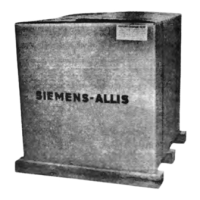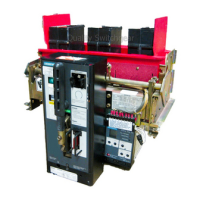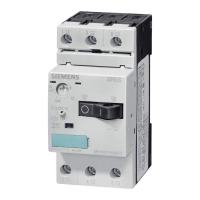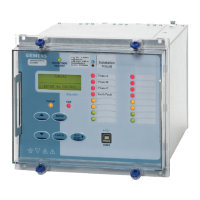OPERATION
Page4
CONNECTED
position. Also, close and latch the
door
prior
to
closing
the
circuit
breaker
when
in the
CON-
NECTED position. Once the
circuit
breaker is closed,
keep the
door
closed.
8. Once the
circuit
breaker
is
energized, it should
not
be
touched, except
for
the
exterior
controls.
DESCRIPTION
The
continuous
current
and
interrupting
ratings
of
the
circuit breakers are as shown on the circuit breaker rating
label.
The
circuit
breakers are also available with
integrally
mounted
current
limiting
fuses
through
2000A frame size,
and
with
separately mounted fuses
for
3200A and 4000A
frame size. For 800A, 1600A, and 2000A frame sizes
tt>e
basic
circuit
breakers are the same
with
or
without
fuses.
The fuses
mount
on a bracket
that
is bolted
to
the side
plates and
upper
studs
on
the back
of
the
circuit
breaker.
The
current limiting fuses increase the interruption rating
to
that
of
the
fuses. Fused
circuit
breakers are identified as
RLF-800, RLF-1600, RLF-2000, RLF-3200,
or
RLF-4000.
Fused
circuit
breakers are also
equipped
with
an open
fuse trip device to open the circuit breaker if one
or
more
current
limiting
fuses open.
NOTE
Fused
circuit
breakers are
not
physically
inter-
changeable
with
unfused breakers.
The
circuit
breakers can also be
supplied
for
stationary
mounting
in
which
the
racking
components
are omitted
and brackets are provided
for
mounting
to
a stationary
frame.
All
RL
circuit
breakers use the same basic closing mecha-
nism
or
operator. The closing
springs
used vary between
sizes.
Three
configurations
of
the
operator
are available
for
charging
the
closing springs. These are:
A.
Manual Charging
B.
Electrical Charging
C.
Combination
Manual-Electrical Charging
The
manual
and
electrical
operators
are identical except
for
the
means
of
supplying
energy
to
the
closing springs.
A
double-toggle,
trip-free
mechanism
is
used. This means
that
the breaker contacts are free
to
open at
any
lime
if
required, regardless of the position of the mechanism.
A.
MANUALLY
OPERATED BREAKERS
The breaker has a center-mounted frame
so
many
of
the
latches and links are arranged
in
pairs. For descriptive
purposes, they will be referred
to
as single items. Refer
to
Figure
1,
page
6,
and Table
1,
page
4.
Oetail (A) shows the
position
of
the
trip
latch and
toggle
linkage when the
circuit breaker
is
open and the closing springs are dis-
charged.
Table 1. Operating Procedure
Manually Operated Circuit Breakers
Operation
Procedure
Pull charging handle
down
all the
•
Charging
Springs
way (approximately 120°) and
return.
it to normal vertical position.
(Engagement of pawl with ratchet
Closing
Tripping
teeth prevents handle reversal until
the downward stroke
is
completed.)
Push down firmly on spring-release
latch
hood
(50) after handle
is
returned
to
normal vertical position.
Push in manual
trip
rod (94).
OR
If
shunt
trip
is
provided, operate
remote
trip
control switch (CST).
(See Fig. 2).
Movement
of
the
charging
handle
downward
rotates
clos-
ing ratchet (140) against roller (43). thus pivoting closing
cam (34)
clockwise
about pin (40). This extends the
clos-
ing springs
through
link (41) and spring hanger (58). Rota-
tion
of
cam (34) allows
roller
(27) in
toggle
linkage
to
be
moved
into
position
shown
in Detail (B).
Kickoff
spring
(10) moves rollers away
from
the stop
block
(7). Then the
toggle linkage is moved
by
torsion spring until latch (15)
clears
trip
latch (12). Spring (13) causes
trip
flap (12)
to
reset under latch (15).
Trip
flap (12) should
normally
stop
against the
front
surface
of
latch (15).
When the
closing
springs are
fully
charged, roller
(43).
engages latch (47). Closing ratchet (140) engages a pawl
in such a manner that the charging cam must complete the
charging stroke before it can return to its normal position.
Courtesy of NationalSwitchgear.com

